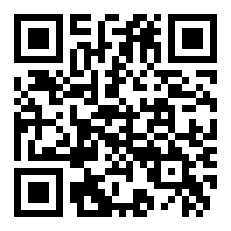The Socio-demographic and clinical profiles of patients with primary open angle glaucoma in Gwagwalada, Nigeria
Keywords:
Primary open angle glaucoma, Nigeria, features of glaucomaAbstract
Background: Disease profiles have value in education and management. This study determined and compared clinico-sociodemographic profiles of primary open angle glaucoma (POAG) with non-glaucoma eye patients.
Methods: A survey of 235 adult eye patients (96 POAG and 135 non-glaucoma) on age, gender, education, vocation, ethnicity, family history of glaucoma, ocular itching, diabetes mellitus, hypertension, visual acuity, central visual field, cup disc ratio, anterior chamber angle assessment, and intraocular pressure.
Results: Mean age 49.88+13.75 years, (114/235, 48.5%) males; (74/96, 77%) POAG were in the age range 40 - 69. POAG comprised 42 ethnics with Igbo (24/96, 25.0%) and Yoruba (20/96, 20.8%) being most common. The POAG (73/96, 76.0%) had varied visual impairment. The POAG versus (v) non-glaucoma includes: positive family history of glaucoma (34/94, 36.2%) v (25/133, 18.8%) (P=0.012); history of diabetes mellitus (8/96, 8.3%) v (6/139, 4.3%); hypertension (24/96, 25.0%) v (28/139, 20.1%); combined diabetes mellitus and hypertension (1/96, 1%) v (4/139, 2.9%), (P=0.268); antidiabetic drugs (5/96, 5.2%) v (7/139, 5.0%); antihypertensives drugs (24/96, 25.0%) v (23/139, 16.5%); combined antidiabetic and antihypertensive drugs (4/96, 4.2%) v (5/139, 3.6%), P=0.328; ocular itching (18/96, 18.7%) v (37/139, 26.5%), P=0.328; visual impairment (51/96, 53.13% RE; 60/96, 62.5% LE) v (40/139, 28.7% RE, 37/139, 26.62% LE), P=0.000; vertical cup disc ratio > 0.4 (96/96, 100% RE; 96/96, 100% LE) v (131/139, 94.25% RE; 124/139, 89.21% LE) [RE, P=0.307; LE, P=0.006]; intraocular pressure > 22mmHg (17/96, 17.71% RE; 22/96, 22.92% LE) v (2/139, 1.44% RE; 2/139, 1.44 % LE), P=0.006. POAG (60/96, 62.5%) were on antiglaucoma drugs and (23/96, 24%) were yet to commence medication, P=0.000. POAG (32/96, 33.3%) were on combination antiglaucoma drugs of beta blockers, prostaglandin inhibitors and carbonic anhydrase inhibitors.
Conclusion: Primary open angle glaucoma has distinguishing clinico-sociodemographic features. Igbo and Yoruba were predominant ethnics especially in the glaucoma population.
References
Onakoya A. Glaucoma care in Nigeria. 24th Annual Faculty of Ophthalmology Lecture. Friday July 14th, 2023. Sheraton Hotel, Ikeja, Lagos, Nigeria.
Adekoya BJ, Shah SP, Onakoya AO, Ayanniyi AA. Glaucoma in southwest Nigeria: clinical presentation, family history and perceptions. The International Journal of Clinical Ophthalmology and Visual Sciences. DOI 10.1007/s10792-014-9903-2.
Wolfs RC, Klaver CC, Ramrattan RS, van Duijn CM , Hofman A, de Jong PT. Genetic Risk of primary open-angle glaucoma: Population-based familial aggregation study. Arch Ophthalmol 1998;116:1640-1645.
Tielsch JM, Katz J, Sommer A, Quigley HA , Javitt JC. Family history and risk of primary open angle glaucoma. The Baltimore Eye Survey. Arch Ophthalmol 1994;112:1:69-73.
Lipner M. Published on August 17, 2022. Glaucoma Facts and Statistics: What You Need to Know.Available at: http://www.verywellhealth.com/facts-about-glaucoma-5667514. Accessed July 16th, 2023.
Okeke CN, Friedman DS, Jampel HD, Congdon NG, Levin L, Lai H, Quigley HA. Targeting relatives of patients with primary open angle glaucoma: The help the family glaucoma project. J Glaucoma 2007;16:6:549-555.
Ayanniyi AA. Should glaucoma be publicly funded in arguments for funding glaucoma treatment?. Niger J Ophthalmol 2017;25:59-66.
Olatunji FO, Ayanniyi AA, Askira BH, Maduka-Okafor FC, Musa KO, Saka SE, et al. Challenges of glaucoma manage- ment in Nigeria: a nationwide perspective. Ethiop Med J, 2019, Vol. 57, No. 2.
Downloads
Published
How to Cite
Issue
Section
Categories
License
Copyright (c) 2023 Transactions of the Ophthalmological Society of Nigeria

This work is licensed under a Creative Commons Attribution-NonCommercial-NoDerivatives 4.0 International License.


















